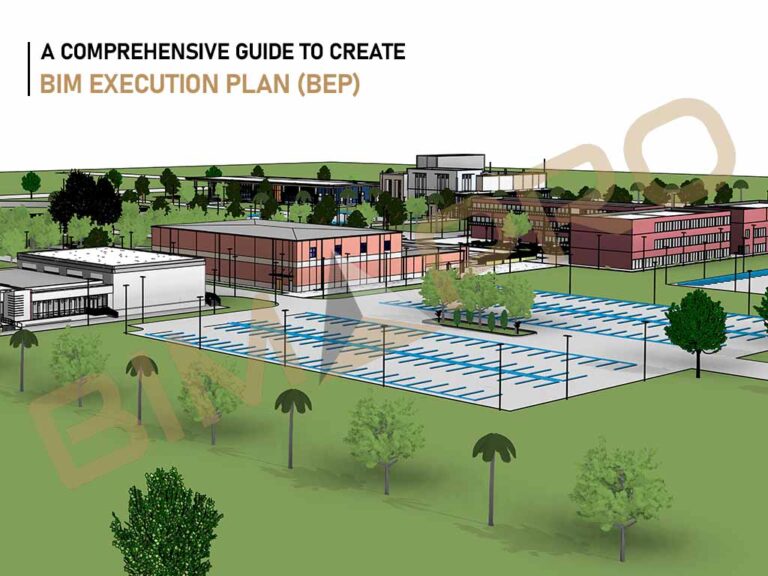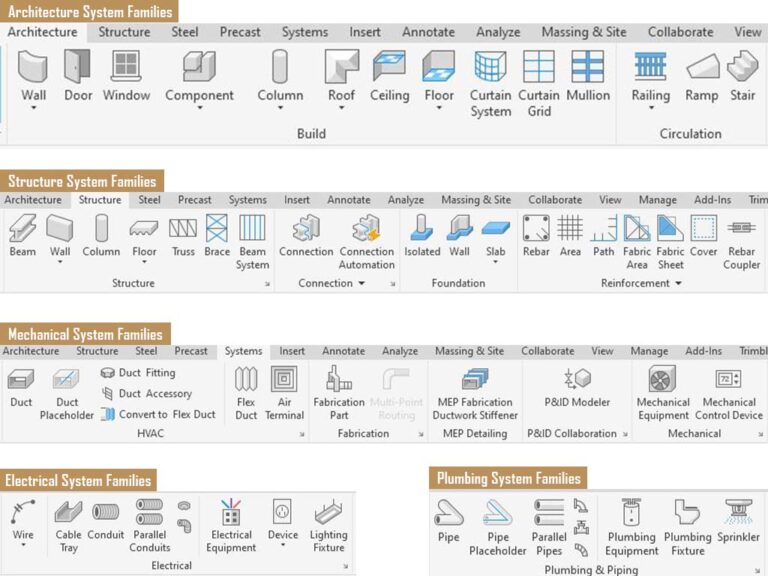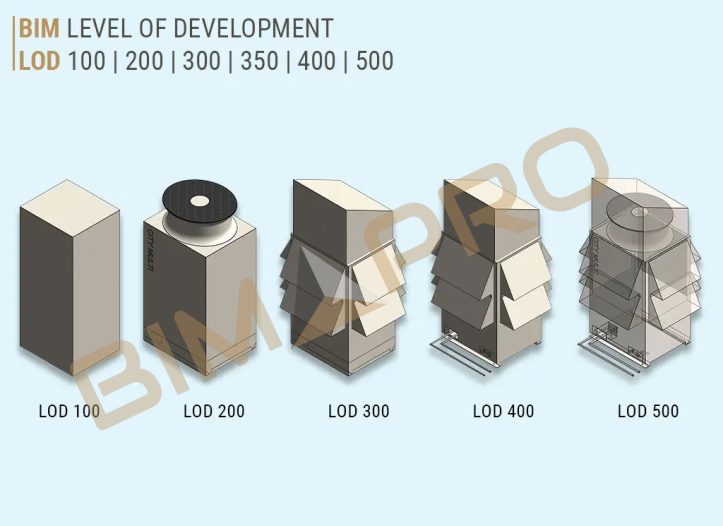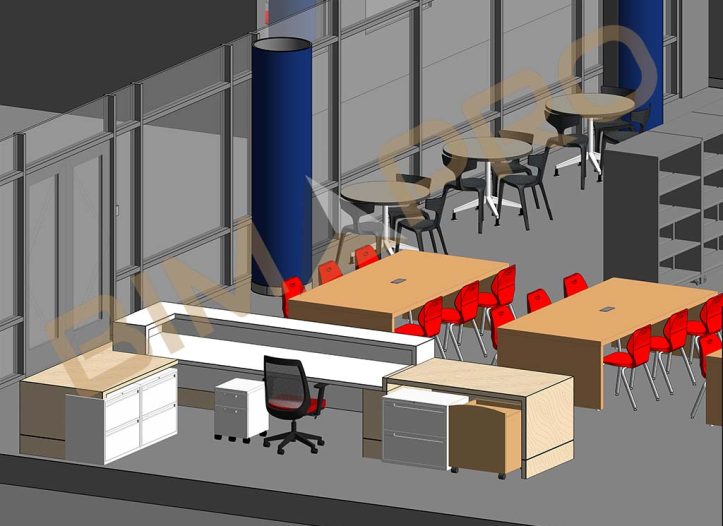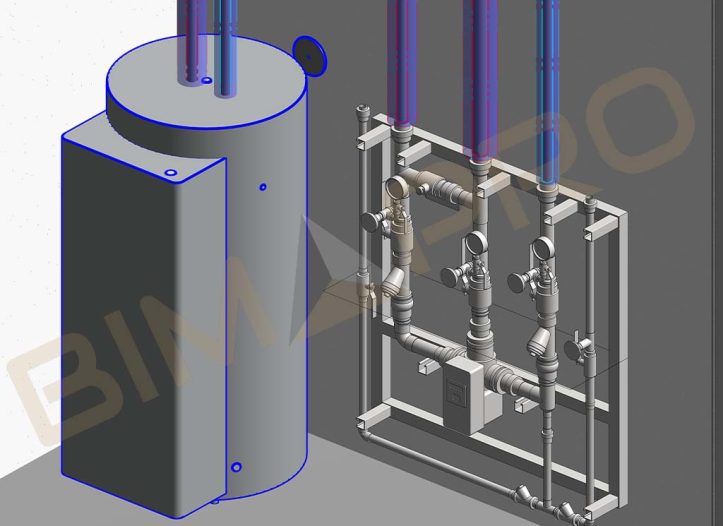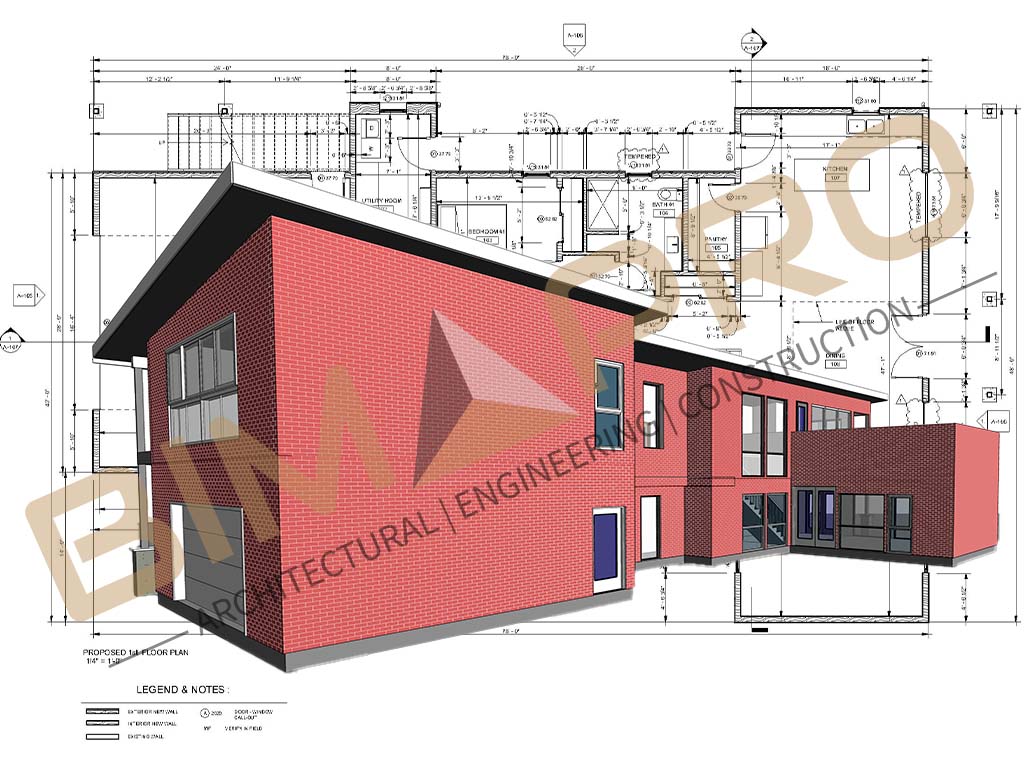Best Practices for BIM Coordination in Construction Projects

Building Information Modeling (BIM) has fundamentally transformed the way construction projects are planned and executed. It enhances collaboration, improves the accuracy of designs, and streamlines workflows across various stakeholders. However, for BIM to truly be effective, careful coordination among all the participants—architects, engineers, contractors, and subcontractors—is essential. BIM coordination ensures that everyone works from the same, up-to-date model, which helps to reduce costly errors, clashes, and rework during the construction process. In this blog, we’ll explore the best practices for BIM coordination to ensure that construction projects are executed with maximum efficiency and minimal complications.
1. Create a Clear BIM Execution Plan (BEP)
The BIM Execution Plan (BEP) is the roadmap for how BIM will be implemented throughout the project. It serves as the foundation for BIM coordination by detailing the scope of the project, objectives, and processes to be followed by all team members. A comprehensive BEP should include important information such as:
Level of Development (LOD): LOD refers to the level of detail and accuracy provided in a model at various stages of the project. For instance, LOD 100 might represent a conceptual model, while LOD 400 could be a detailed model with all elements ready for construction. By specifying the required LOD for different phases (concept, design, construction), the BEP ensures that everyone is clear about what needs to be delivered at each stage.
File-sharing protocols: It’s critical to set up rules for how models, documents, and data are shared between team members. This includes defining which file formats should be used, how versions will be tracked, and how models will be exchanged. This prevents multiple teams from working on outdated versions and helps streamline the data flow across the project.
Roles and responsibilities: A well-defined BEP should specify who is responsible for what. For example, who will update the architectural model, who will review structural clashes, and who will handle coordination with subcontractors. Having this clarity helps prevent misunderstandings and inefficiencies.
Coordination schedules: Regular meetings and checkpoints should be scheduled to review progress, resolve issues, and ensure that the project is on track. The BEP should detail these timelines, setting expectations for when models should be updated, when clash detection is to occur, and how often the project team will meet to review updates and resolve issues.
By establishing clear expectations from the start, the team can avoid misunderstandings and ensure smoother workflows as the project progresses.
2. Use a Common Data Environment (CDE)
A Common Data Environment (CDE) is a centralized, cloud-based platform where all project data is stored, accessed, and updated in real-time. This eliminates the problem of outdated models or conflicting information between team members. A well-organized CDE not only ensures that all stakeholders have access to the latest versions of project files, but it also helps to:
Real-time updates: The CDE allows every team member to access the most up-to-date models, plans, and project data. As one party updates the model or documents, the CDE instantly reflects these changes, eliminating the risk of team members working with outdated information.
Version control: In a construction project, revisions are frequent. A CDE ensures that each new version of the model is correctly stored and logged, making it easy to track which version is the latest and which changes have been made. This eliminates confusion when teams are reviewing or using models.
Structured data management: The CDE can organize all data into folders and categories that are easy to navigate. This includes both 3D models and other essential documents like schedules, cost data, and design guidelines. This structure ensures that team members can find exactly what they need without delays.
Secure access control: A CDE offers controlled access, ensuring that only authorized personnel can make changes to specific parts of the project. This is especially important for sensitive data or documents. Team members might have view-only access to some files while others may have editing rights, allowing for greater security and proper data management.
Platforms like Autodesk BIM 360, Trimble Connect, and Procore are commonly used for managing BIM data and coordinating collaboration between teams.
3. Hold Regular Clash Detection and Coordination Meetings
Clash detection is one of the key benefits of BIM, as it allows teams to identify and address design conflicts before they become costly issues on site. Clash detection tools like Navisworks, Solibri, and Revizto can detect conflicts between various systems (architectural, structural, and MEP) by analyzing how these systems interact within the 3D model. Here’s how to make the most of this feature:
Clash detection tools: Tools like Navisworks, Solibri, and Revizto provide automated clash detection by analyzing 3D models and identifying points of conflict (such as overlapping pipes or electrical systems within a wall). These tools compare the individual models (e.g., architecture, MEP, and structure) to identify where they may interfere with each other. Once a clash is found, teams can modify the design or move elements before construction starts, minimizing rework on-site.
Regularly scheduled meetings: To keep the process on track, meetings should be scheduled on a regular basis (e.g., weekly or bi-weekly). These meetings allow teams to review clash reports, discuss potential solutions, and update the model as necessary. Regular meetings ensure that small issues don’t turn into large, costly problems later in the project.
Efficient issue tracking: During these meetings, a clear agenda should be followed. Issues that need to be addressed should be tracked, and responsibility for resolving each issue should be assigned to the appropriate team members. This ensures accountability and keeps the project moving forward without delay.
By addressing clashes in the design phase, teams can avoid delays and cost overruns caused by on-site conflicts.

4. Promote Cross-Disciplinary Collaboration
BIM coordination isn’t just about technology—it’s also about fostering collaboration between different disciplines. Each team—architects, structural engineers, MEP specialists, and contractors—must work together and ensure that their individual models align with the overall project goals. To promote cross-disciplinary collaboration:
Active participation from all disciplines: All teams must engage in the BIM process to ensure that their models align with the overall project goals. For instance, the structural engineer should ensure that their design allows for the placement of MEP systems, and the architect should consider how these systems will fit into their design. When everyone is actively involved, the team can identify and resolve potential issues early in the process.
Real-time collaboration: BIM collaboration platforms like BIM 360 or Trimble Connect allow teams to make real-time updates to models and share them instantly. This instant collaboration reduces the risk of miscommunications and helps ensure that everyone is working from the same up-to-date model.
Fostering communication: Clear communication is key to reducing errors. Teams should meet regularly to discuss any issues that may arise, and they should use collaboration tools to flag potential conflicts or misalignments. By keeping communication lines open, teams are more likely to identify and resolve issues before they affect the project.
By breaking down silos and fostering open communication, BIM coordination becomes more effective, helping ensure that all models are integrated into a cohesive design.
5. Implement Version Control and Change Management
Changes in design are a natural part of construction projects, and managing these changes efficiently is critical to the success of BIM coordination. Without proper version control and change management, teams can end up working with outdated or conflicting information. Here are some strategies to implement version control and manage changes effectively:
Tracking revisions: Every change made to a model or document should be recorded with a time and date stamp. This ensures transparency in the project’s progress and prevents issues related to outdated files being used. Most BIM tools come with version control capabilities, which allow teams to revert to previous versions if necessary.
Change approval workflows: Establish a structured process for approving changes. Changes made to models or plans should go through a review and approval process before being implemented. This prevents unauthorized changes that could disrupt the coordination process.
Documenting changes: It’s important to keep a record of all changes, along with the reasons behind them. This documentation helps teams track the impact of design changes on the overall project and ensures everyone is informed about what has been modified.
By maintaining a transparent and organized system for managing changes, teams can prevent conflicts caused by unapproved or outdated revisions.
6. Leverage Automation and Artificial Intelligence in BIM
Technology is advancing rapidly, and integrating automation and artificial intelligence (AI) into BIM processes can significantly enhance coordination efforts. Here’s how automation and AI can help:
Automated clash detection: As mentioned earlier, clash detection tools can automatically scan the model for conflicts. Automation tools can also suggest possible solutions or design alterations, reducing manual review time.
AI-driven risk analysis: AI can analyze BIM models and historical project data to predict potential issues, such as delays, cost overruns, or design flaws. By using this predictive analytics, project managers can take proactive measures to mitigate risks before they escalate.
Automated tasks: Routine tasks, such as quantity takeoffs (calculating the materials needed) and scheduling, can be automated through BIM tools. These automated workflows save time, reduce human error, and improve overall efficiency.
These technologies can help speed up the coordination process, improve accuracy, and reduce human error.
7. Provide Ongoing Training and Skill Development for BIM Teams
To maximize the potential of BIM, teams need to stay up-to-date with the latest tools, techniques, and best practices. Continuous training and skill development are essential to keeping your team effective and productive. Here are a few strategies:
BIM training programs: Offer regular, formal training sessions to ensure that all team members are familiar with the latest BIM software and tools. This might include platform-specific training or general BIM methodology sessions.
Advanced learning opportunities: Encourage team members to explore advanced BIM topics like digital twins, parametric design, and generative modeling. These technologies can add significant value to the BIM process and improve project outcomes.
Pilot projects for new workflows: Before rolling out new processes on a larger scale, test them on smaller projects. This allows team members to familiarize themselves with new tools and workflows, ensuring smoother transitions for larger projects.
By investing in training, companies can ensure that their teams have the skills to make the most of advanced BIM technologies.
8. Ensure Model Accuracy and Data Integrity
-
Regular quality assurance checks: Set up processes for QA and QC checks throughout the project to ensure that models are up to standard. This might involve verifying dimensions, ensuring that data attributes are correctly assigned, or confirming that the model aligns with design specifications.
-
Standardizing data conventions: Ensure that everyone follows the same naming conventions, data formats, and metadata standards. Consistency across the project helps avoid confusion and errors when models are merged or shared.
-
Use of laser scanning: 3D Laser scanning and reality capture technologies allow teams to verify that the model accurately represents real-world conditions. This is particularly important during construction when discrepancies between the planned model and actual conditions can arise.

Read more: BIM in Construction Industry
9. Integrate BIM with Field Operations
BIM is not just for design—it’s also a valuable tool during construction. By integrating BIM with field operations, teams can ensure that what’s built aligns with the planned design. This can be achieved through:
AR/VR for field teams: Augmented Reality (AR) and Virtual Reality (VR) technologies can allow on-site teams to visualize and interact with 3D models before construction. This gives workers a clear understanding of how to execute the design, reducing errors and misunderstandings.
Mobile access to models: Equip construction teams with mobile devices that provide real-time access to the BIM model. This allows workers to check the accuracy of installations and monitor progress directly from the model, improving communication and quality control.
Drones and IoT devices: Use drones to capture real-time images of the construction site and compare them to the BIM model. IoT devices can collect environmental data (e.g., temperature, humidity) and monitor the construction process, providing valuable insights into the project’s progress.
Integrating BIM with field operations helps ensure that construction is done according to plan, reducing errors and improving quality control.
10. Track Performance and Gather Feedback for Continuous Improvement
After the project is complete, it’s important to analyze performance and gather feedback to improve future BIM coordination efforts. Here’s how:
Monitor KPIs: Key metrics, such as clash resolution time, design accuracy, and cost savings, should be tracked to assess how well the project is going. These KPIs provide valuable insights into what is working well and where improvements can be made.
Post-construction analysis: Once the project is completed, conduct a thorough review of the BIM process to identify areas for improvement. This may involve evaluating the efficiency of coordination meetings, clash detection processes, or team collaboration.
Collect stakeholder feedback: Gather input from all stakeholders (architects, engineers, contractors) about their experience using BIM. This feedback can be used to refine strategies and processes for future projects, ensuring continuous improvement.
By continuously tracking performance and gathering feedback, teams can continuously improve their BIM coordination strategies and achieve even better results in future projects.
Conclusion
Effective BIM coordination is essential for successful construction projects. By following best practices such as creating a clear BIM Execution Plan, using a Common Data Environment, conducting regular clash detection, encouraging cross-disciplinary collaboration, and leveraging advanced technologies like AI and automation, teams can streamline workflows, reduce errors, and improve project outcomes. As the construction industry continues to evolve, embracing these strategies will help teams stay ahead of the curve, ensuring timely project delivery, cost savings, mitigate risks, and high-quality construction.
Reach out to BIMPRO for BIM Coordination Services and Clash Detection Services for your Construction Projects at info@bimprous.com







